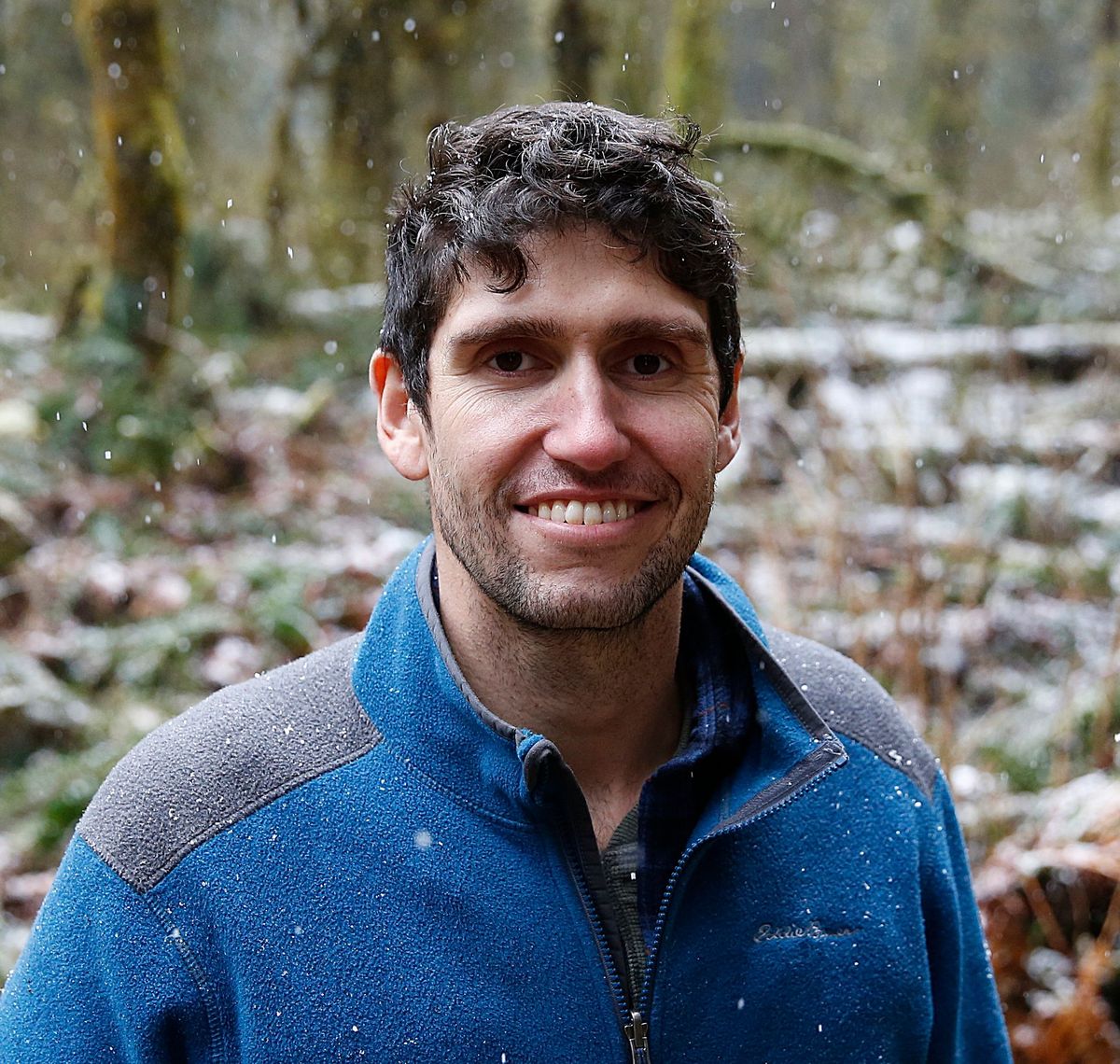Journalist Ben Goldfarb coming to Spokane to talk road ecology at Northwest Passages

There are millions and millions of miles of roads in the world, of varying surface and size. People drive them every day without thinking much about them, and certainly not about the ecological damage they’ve caused.
Sure, a driver might notice the rotting carcass of a road-killed deer, but they likely won’t notice the small amphibians that get trampled by tires. While driving through, say, Wyoming, they likely won’t consider how the interstate they’re using reconfigured the movements of deer and pronghorn.
Ben Goldfarb’s new book, “Crossings: How Road Ecology is Shaping the Future of Our Planet” aims to change that. The 300-page volume takes readers around the world to show the impacts of our infrastructure, from gravel roads in the forests of Idaho to interstates in California to Tasmania, which has been dubbed the “Roadkill Capital of the World.”
But it’s not all doom and gloom. Goldfarb shows readers the rise of road ecology as a scientific discipline and the promise of dedicated wildlife crossings as a way to reduce the impact of our need for transportation.
“It’s an immense, sprawling problem,” Goldfarb said in an interview Thursday. “But not a totally intractable one.”
The author will be in Spokane this week for an event with the Northwest Passages Book Club. He’ll speak with former Spokesman-Review outdoors editor Eli Francovich at the Bing Crosby Theater at 7 p.m. on Thursday.
It’s a homecoming of sorts. Goldfarb lived in Spokane for a few years before moving to Colorado about a year and a half ago. He said he wrote most of the book while living in Spokane, and he’s excited to return.
“It feels wonderfully full-circle to return to speak about the book in the place that I wrote it,” Goldfarb said.
Published this fall, “Crossings” is Goldfarb’s second book. His first, “Eager: The Surprising, Secret Life of Beavers and Why They Matter,” was published in 2018.
The two books share some DNA, Goldfarb said. In each, he examines ecological tragedies that are easily ignored. In “Eager,” it’s the vast impact that the fur trade had on the environment through the killing of beavers. In “Crossings,” it’s the ways our vast road networks have harmed myriad wildlife species through an increase in roadkill, habitat destruction, more people driving into wild places and more.
“(The books) both share the same goal, which is to make you think differently about the forces that shaped North American landscapes,” Goldfarb said.
Goldfarb, who grew up in the suburbs of New York City, has been an environmental journalist for more than a decade, publishing stories in a wide variety of outlets. He’s a correspondent for High Country News, and it was while working on a story for that magazine that he got his introduction to wildlife ecology.
In 2013, he was working on a story about the Yellowstone to Yukon Conservation Initiative, a nonprofit group working toward connecting wildlands between the two iconic ecosystems. The story brought him to northwestern Montana, where scientists showed him a wildlife overpass that arcs above U.S. Highway 93 north of Missoula.
He walked on top of the overpass, a place meant for all manner of critters who needed to cross the road. And, once there, he got the feeling that he was working on something that would be more than a magazine story.
“It’s been a decade in the making, but I think I always knew I was going to spend a lot of time on this topic,” he said.
Work on {%%note} {/%%note}“Eager” intervened. Once that was over, though, he returned to road ecology. Supported by a fellowship from the Alicia Patterson Foundation, he traveled far and wide while researching the book. He saw a wombat in Tasmania, anteaters in Brazil, salmon in Oregon and a whole lot more.
He writes that roads “are not merely a symptom of civilization, but a distinct disease.” He also recognizes that all of us are part of the problem. Even when he drives a Forest Service road to a favorite trailhead or trout stream, he knows that just his presence is having an impact on the world around him.
He knows more cars will be traveling the world in the coming years, and that more roads will be built.
But he also knows that building wildlife crossings offers a way to limit the damage. Dedicated crossings built for animals like elk and deer have been shown to work, he said, and even pay for themselves over time through a reduction in animal crashes.
That idea has gained traction with government leaders. The $1.2 trillion infrastructure package passed by Congress in 2021 included a $350 million investment in wildlife crossing projects.
That’s good, Goldfarb said, but it’s a drop in the bucket in the federal government’s overall transportation budget. And even if all those crossings were built today, more work would still be needed.
“We are improving and have not done nearly enough,” he said. “I think both of those things are true.”